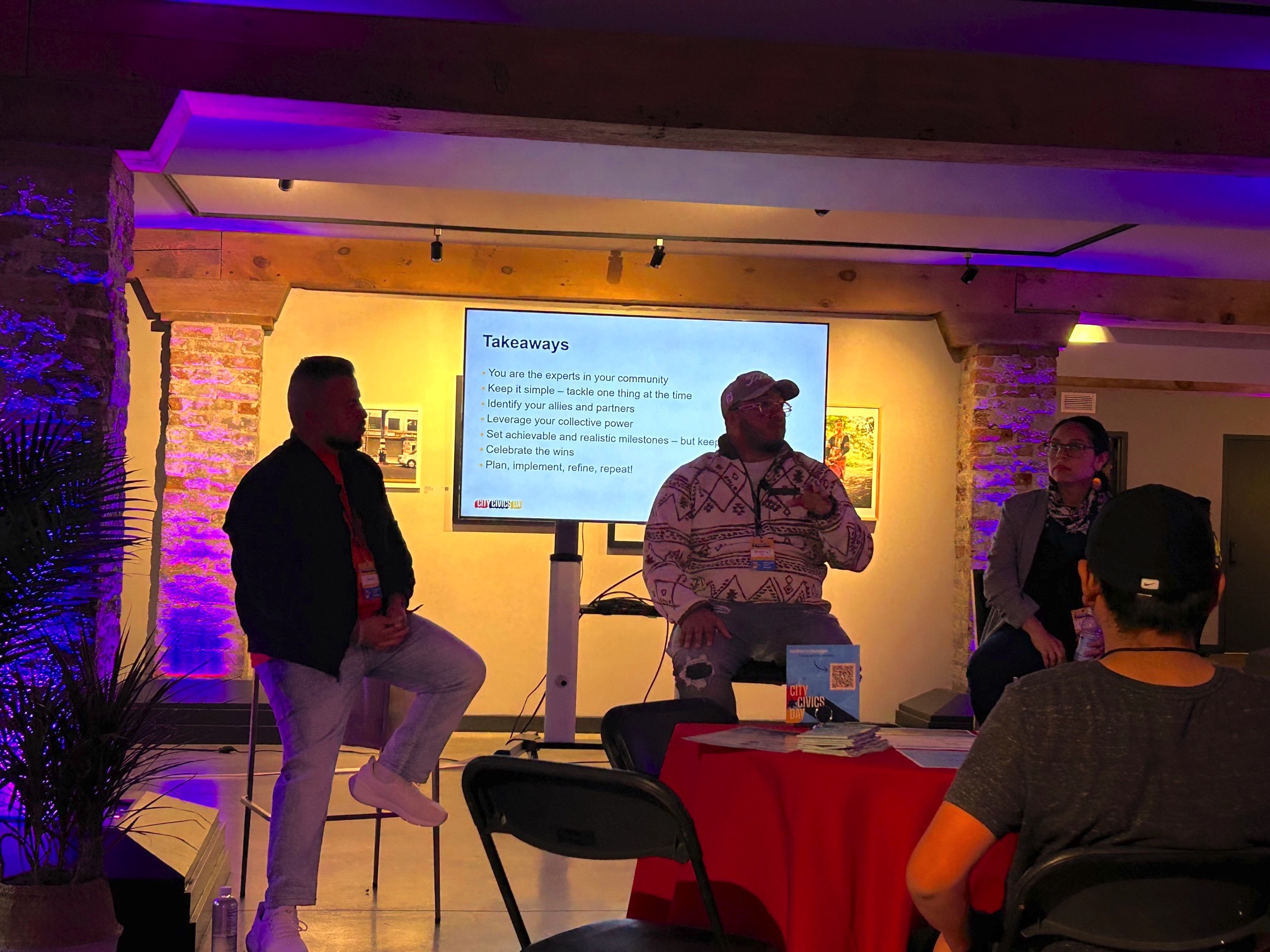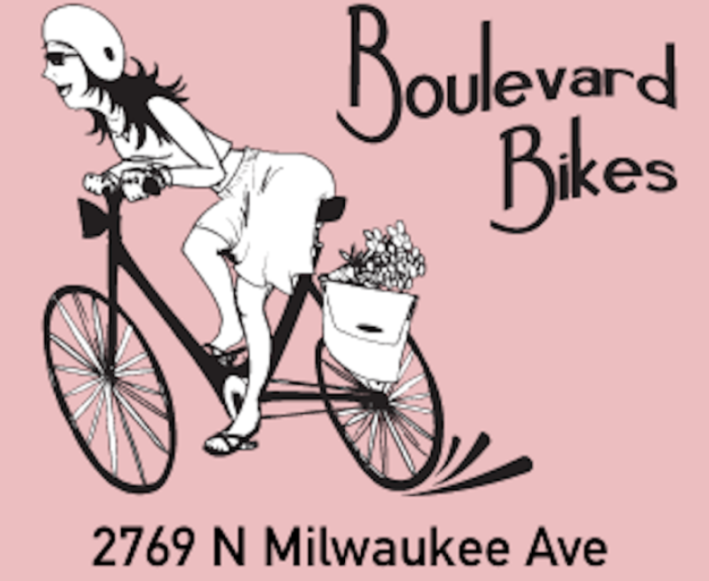
Last Saturday, the City of Chicago held its first ever City Civics Day, a free daylong series of panel discussions and workshops about how Chicagoans can get involved in their communities.
The event took place at the Epiphany Center for the Arts, a former Episcopal church located at 201 S. Ashland Ave. on the Near West Side, converted into a multistory complex of galleries and event spaces. Sessions on city planning, community gardening, local media, and more took place between Epiphany’s stunning hammerbeamed upstairs sanctuary, basement catacombs, and the massive Epiphany Hall, its frescos and organ pipes a stately setting for conversations about the preservation of cultural history and the importance of public space. A few hundred people showed up and the overall mood was upbeat—to be expected from a crowd that believes in the power of an engaged citizenry to shape the world around them.
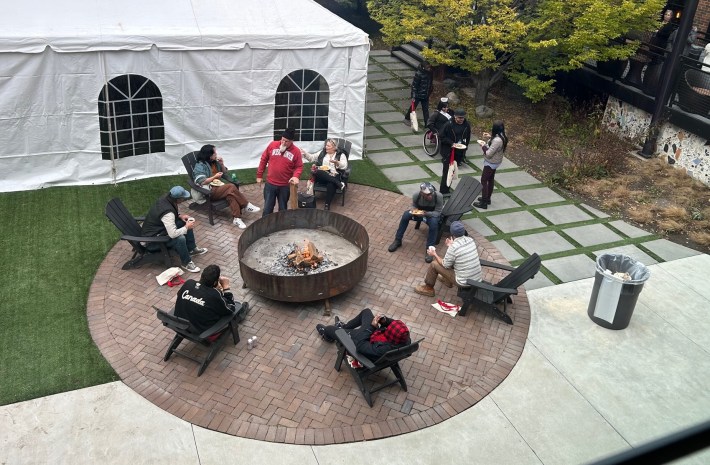
The city departments leading the day were Planning and Development and Cultural Affairs and Special Event. The experience was so pleasant and well thought out it made me wish every conference was organized by arts administrators and city planners. Complimentary and ample breakfast and hot lunch were available, an inviting fire pit crackled in the courtyard, and one upstairs gallery was designated as quiet space. The day began and concluded with performances. Attendees were given tote bags, programs and small notebooks and pens at registration. Staff positioned throughout the winding hallways held signs inviting questions.
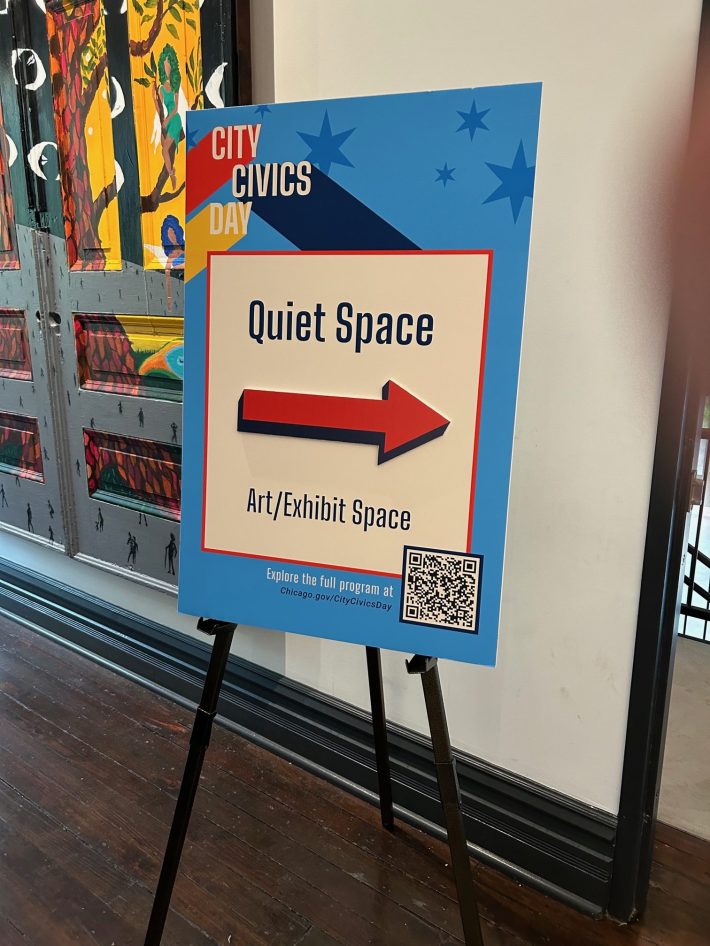
I attended the breakout session “How to create active, sustainable, safe streets,” which took place below the subject in question, down a narrow wood staircase in Epiphany’s purple-lit catacombs. About 60 people gathered to hear how Jeremy Cuebas and David Velez, organizers at Northwest Center, along with Romina Castillo, director of outreach at the Chicago Department of Transportation, collaborated with community members and neighborhood youth to improve biking in Belmont Cragin.
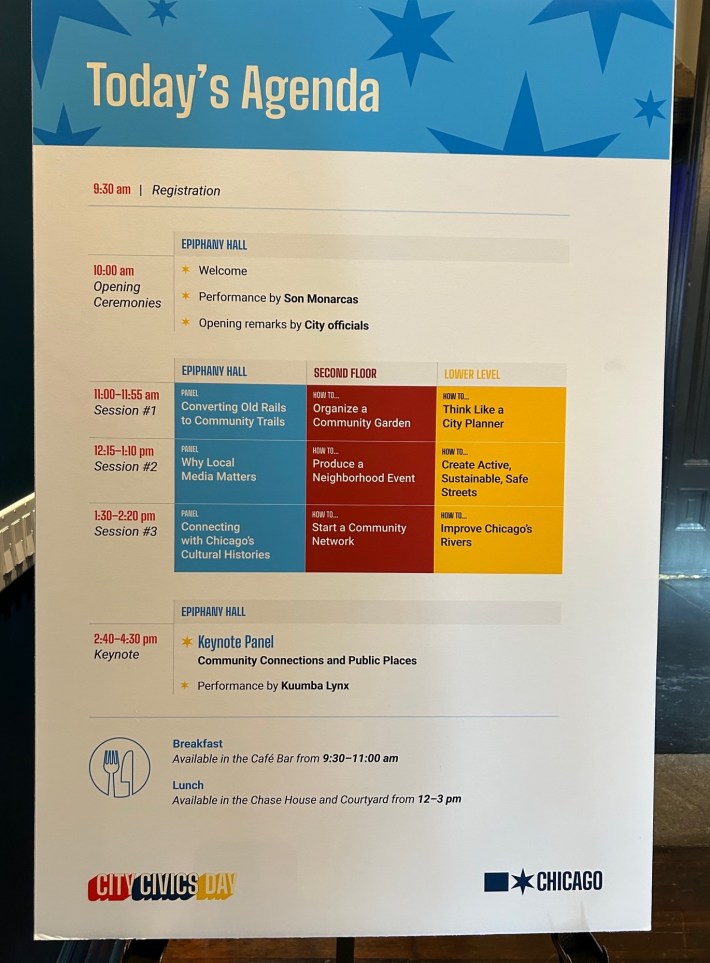
Just a few years ago, the northwest side neighborhood had no bike lanes or Divvy stations. When a member of Northwest Center’s youth program was doored and injured while riding his bike on Belmont Avenue, the organization sprang into action. They contacted the three alderpersons within in the neighborhood boundary, reached out CDOT, and held youth-led conversations about how to improve safety for people on bikes. By building community power and buy in, Northwest Center and CDOT brought 15 miles of bikeways and 13 Divvy stations to Belmont Cragin. “It’s important the vision is led by people in the community,” Cuevas said.
This was the consistent theme of the session: the city can build bike lanes and provide educational resources, but how to solve a problem is best decided by the people who live with it every day. Cuebas said that Northwest Center youth who facilitated input sessions were paid stipends by CDOT for their time and local expertise.
Velez said Northwest Center invited community members to several events to provide input. The organization began holding weekly bike rides that departed from neighborhood parks. Velez said starting rides from spots that youth were already gathering was key to increasing participation and building relationships. “Go where people are at,” he said. “Word of mouth is still the best marketing.”
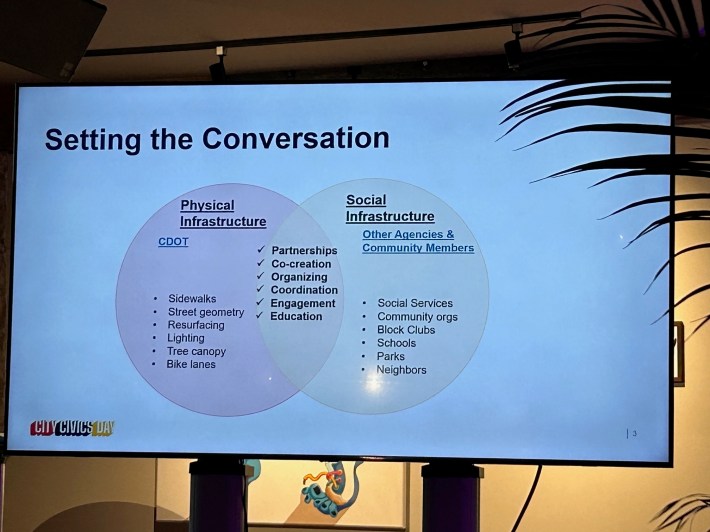
To build support from local business owners, some of whom complained that bike lanes will hurt their foot traffic, Northwest Center held rides that stopped at small businesses. Velez said the rides helped business owners understand how bike lanes can help increase the visibility of their shops and boost patronage from people who travel by foot or bicycle.
To hear concerns from other bike lane opponents in the neighborhood, Northwest Center hosted an online critical feedback session entitled “Pump the Breaks.” Cuevas said the conversations were productive, if “not always nice. But once we presented it that protected bike lanes will save your children’s and your nieces’ and nephews’ lives, we got more support.”
The success of Northwest Center’s organizing effort and partnership with CDOT is a case study in the city’s Chicago Cycling Strategy for how to build bikeways in neighborhoods with little to no bike infrastructure and a growing interest in bicycling.
Cuevas said a takeaway from the process was the importance of identifying “allies and enemies” and that there are “no permanent enemies.” Alderpersons who started out opposed to the bike lanes were won over. Cuevas added that he bears in mind alliances are also impermanent.
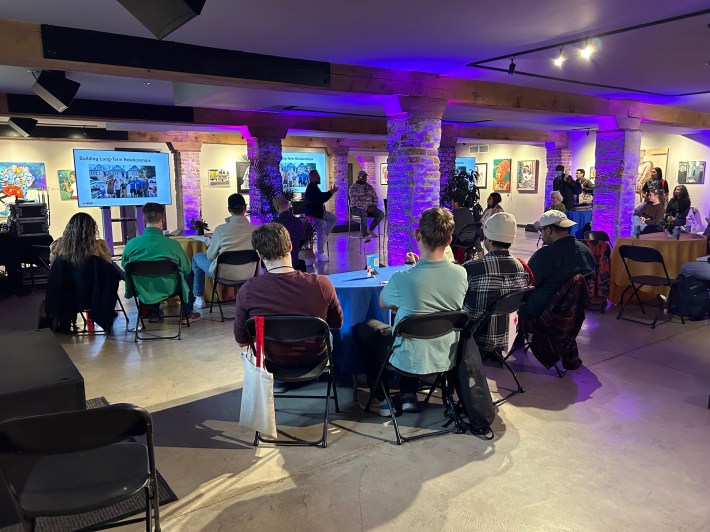
In the Q and A, one attendee asked how the panelists leveraged community power to get bike lanes built, and how this could translate to successful action for bus rapid transit, high-speed express bus routes. The city and CTA unsuccessfully proposed building BRT on Ashland Avenue in the early 2010s, and opened the Loop Link BRT-lite corridor in December 2015, but the city hasn't done much has happened with the concept since then. However, the BRT concept has been on the lips of Chicago transit advocates for well over a year.
Cuevas replied that power in numbers is most effective. “[Alderpersons] sometimes have different ideas than residents,” he said. “But when you bring residents to their office, they have no choice but to listen.”
Another person noted how bike and pedestrian improvements on state-controlled roads often hit an impasse, even when CDOT is a partner, and asked how to work with Illinois Department of Transportation on similar efforts. Castillo mentioned the recent agreement IDOT signed to take all road users into account in urban areas and was confident the city could garner cooperation from IDOT.
The last question was about how to create a bike network across neighborhood boundaries, where the borders between wards or constituencies can be seen in bike lanes that end abruptly or a sudden lack of pedestrian accommodations. Castillo said that CDOT had conversations with neighboring communities and helped extend the bike lanes into adjacent Portage Park, Hermosa and Galewood.
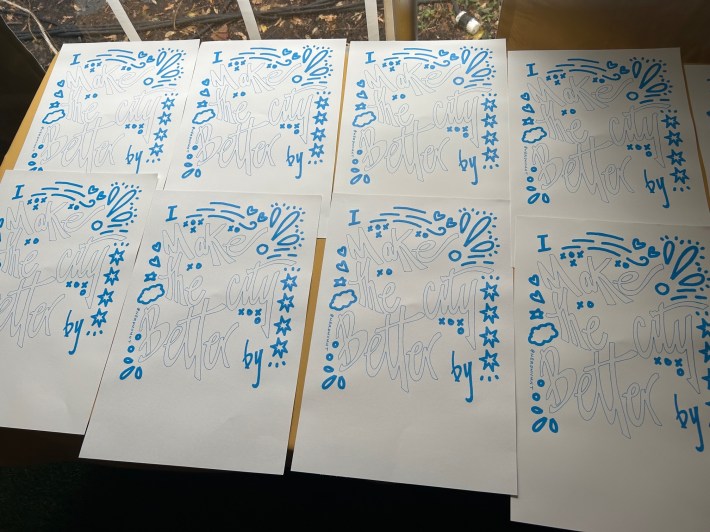
The first City Civics Day was inspiring, informative and well attended. It would be great to see it become an annual event.

Did you appreciate this post? Please consider making a tax-deductible donation.
